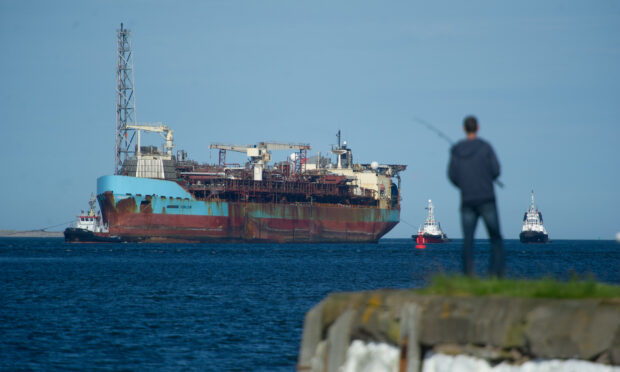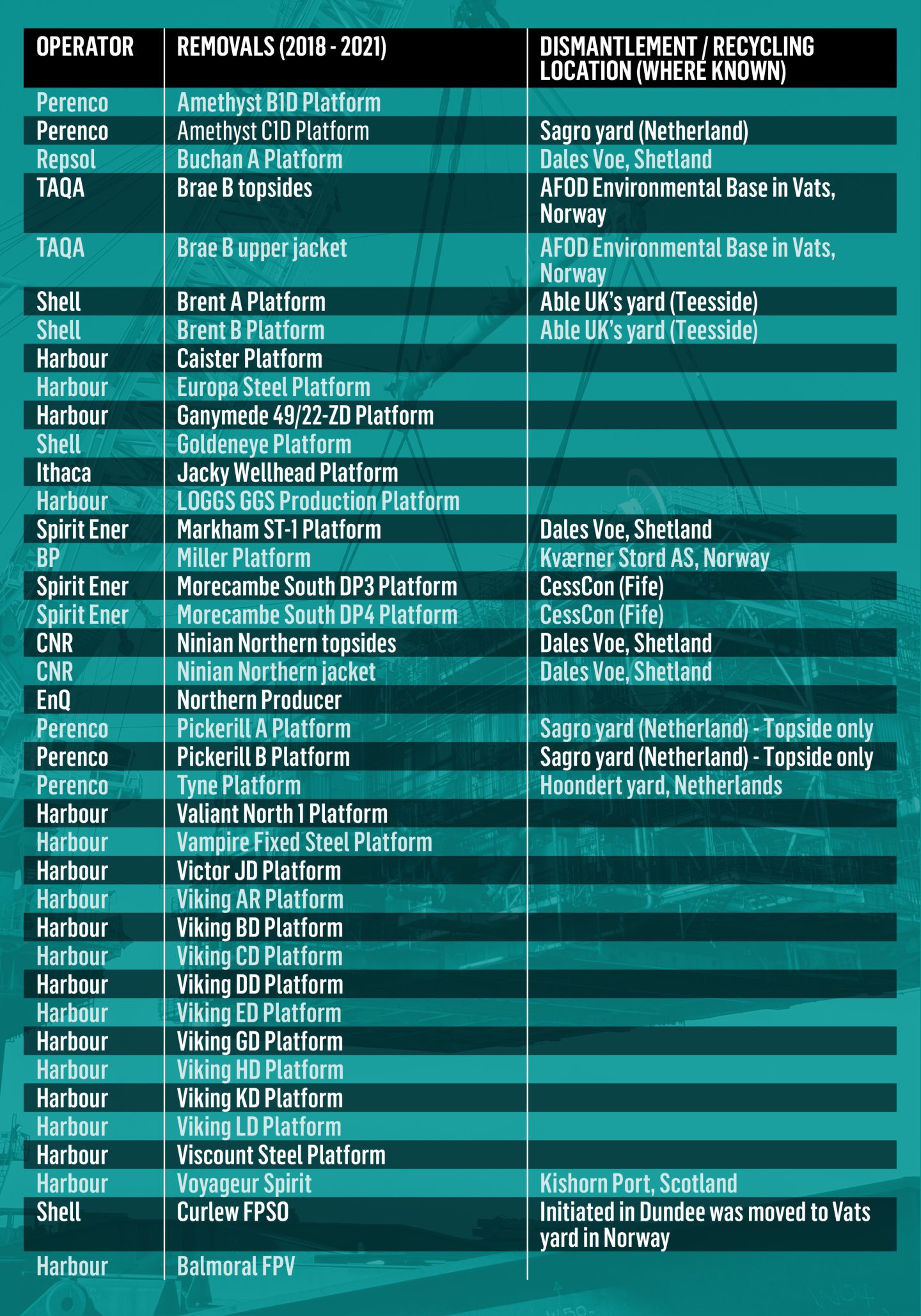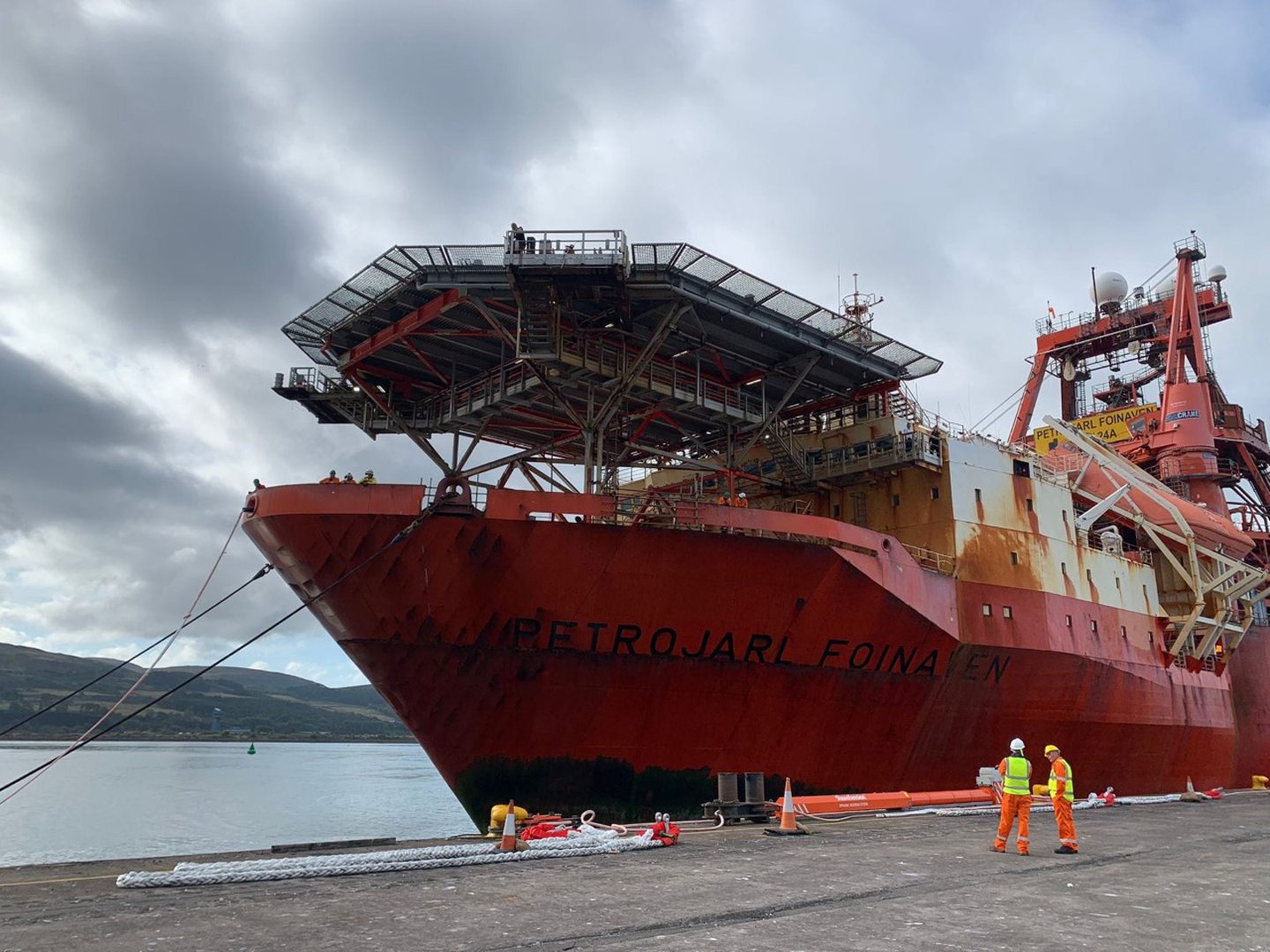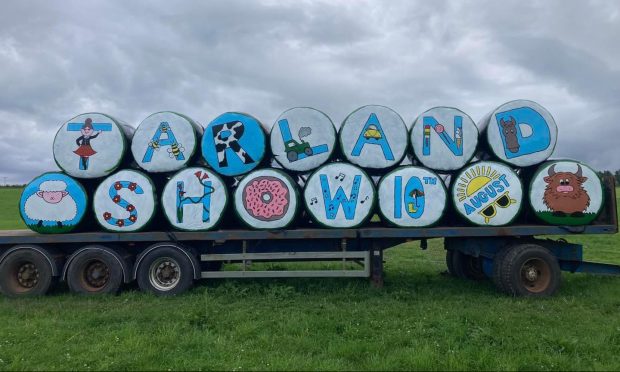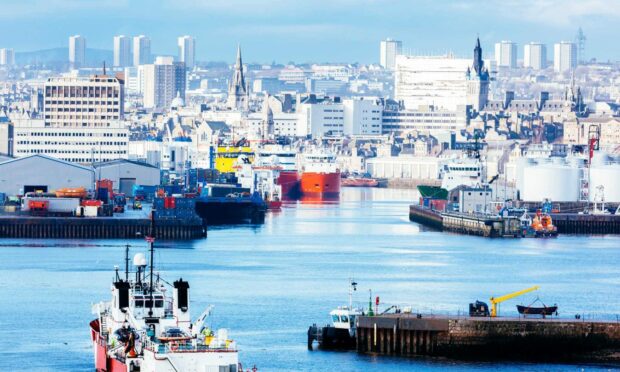The majority of UK North Sea assets are being dismantled in Britain, new figures have revealed amid concerns of overseas yards winning decommissioning work.
Information obtained by Energy Voice, sister publication to The Press and Journal, shows British yards have won dismantling for 26 of the 39 oil and gas assets removed from the UK North Sea between 2018-2021.
That includes a series of heavy, high value assets like the Brent and Ninian platforms, alongside smaller prizes like the dozen V-field assets from Harbour Energy’s Southern North Sea portfolio.
The 26 do not include the Shell Curlew floating production storage and offloading (FPSO) vessel which, ultimately, went to Norway for dismantling, or the Voyageur Spirit vessel, currently laid up at Kishorn but not being recycled at this stage.
It comes amid a series of high-profile wins for overseas yards in recent months, such as the Foinaven FPSO heading to Denmark for dismantling, despite bids from a yard in Scotland just 20 miles away from where it is currently laid up, and the Brae Bravo going to Norway.
FOI gaps
A freedom of information request to the North Sea Transition Authority (NSTA) found that records had not been kept for 22 of the 39 assets which were removed from 2018-2021, raising concerns about local content targets.
But Harbour Energy has insisted 17 of these “unknowns” – assets from the southern North Sea – have all been dismantled at Veolia and Able facilities at Great Yarmouth and on Teesside, respectively.
Harbour said: “NTSA is aware of the dismantling and recycling arrangements for all these installations.”
Industry expert Will Rowley, chief executive of Offshore Solutions Group and former head of industry body Decom North Sea, said: “The poor record-keeping is still an issue as every operator has to submit a detailed plan to the NSTA to gain approval.
“This reflects the continued low priority of decom within the wider NSTA’s thinking.”
On the figures and its decommissioning commitment, NSTA pointed to actions to support the supply chain to win work.
A spokesperson at the regulator said: “NSTA has taken action to answer the UK supply chain’s calls for a clearer picture of upcoming UKCS (UK continental shelf) project activity, including decommissioning, both through our Pathfinder website and decommissioning data visibility dashboard. Improving visibility of near-term contracting opportunities gives suppliers more confidence to invest in skills and technologies.
“In line with revised guidance published on August 30 2022, supply chain action plans will be used to monitor and track the UK local content commitments outlined in the North Sea Transition Deal relating to energy transition projects and decommissioning activity.”
The regulator also pointed to its advocacy of well decommissioning campaigns to deliver “deliver substantial cost efficiencies, reduce emissions and give suppliers confidence to invest”.
Competition with wind for UK decommissioning
According to the data from the regulator, seven of the 39 assets have gone overseas and the remaining three are not known.
Last week, Atlas Decom issued criticism at Teekay and BP over the Foinaven FPSO being sent to Denmark for decommissioning, rather than its yard nearby to where its laid up at Hunterston.
Several other assets have gone to neighbouring North Sea countries in recent months, rather than UK yards.
Ricky Thomson, decommissioning manager at industry body Offshore Energies UK, said onshore recycling was not the only potential prize.
Mr Thomson added: “Decommissioning is a broad operation, with many onshore and offshore activities, which over the next decade represents £16.6 billion of potential activity for the UK supply chain.
“We’re committed to working with companies, industry, regulators and government to realise the full potential of our homegrown decommissioning capabilities, and we continue to identify where we can work together to help deliver meaningful change.”
UK success
Mr Rowley said onshore dismantling and offshore well plugging and abandonment were both booming areas for the UK sector.
The UK has an “increasingly dominant role” across the North Sea on the latter.
Looking at the assets on the list, Mr Rowley highlighted that by tonnage and value the Brent and Ninian platforms were both important wins the UK has claimed.
“Other issues to consider for UK yards going forward are the competition for space with offshore wind; a potentially more lucrative business.
“Compared to two years ago, some yards may choose to undertake offshore wind work in preference to decom, especially if the schedule is longer and/or the chance of follow on sustained activity rather than a single projects,” added Mr Rowley.
